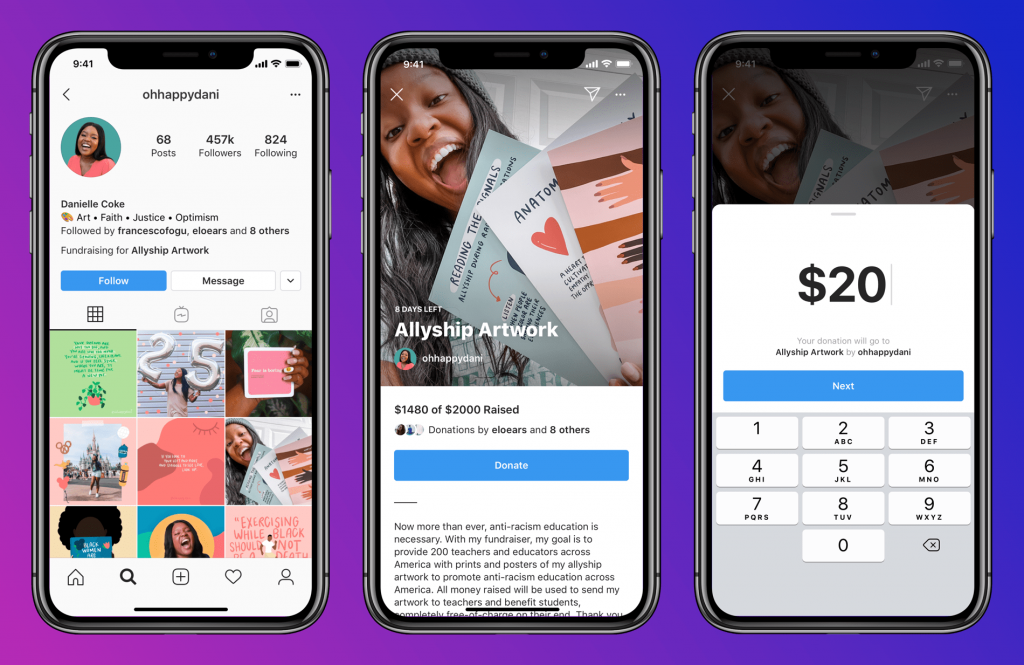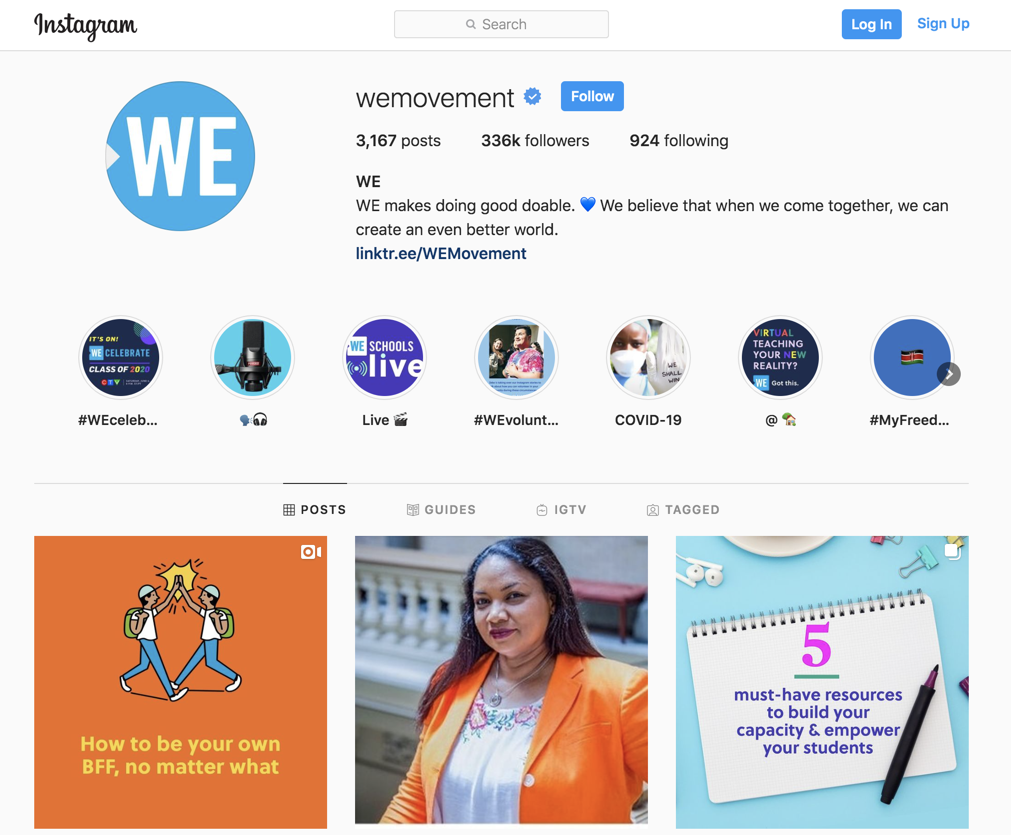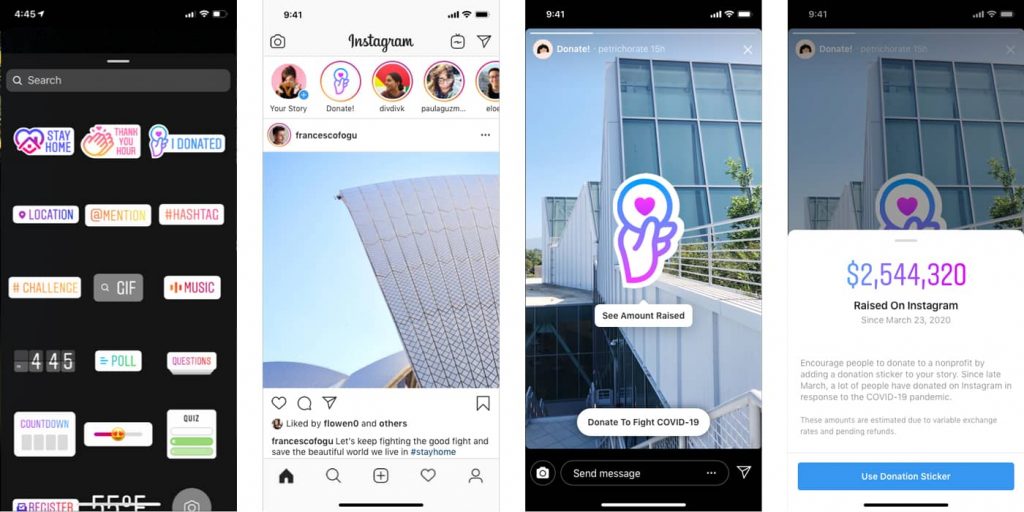Nonprofits, say it or not, have higher costs of user activity on Instagram than almost every other field. Finding an optimum environment for the audience, on the other hand, can be difficult.
An image is said to be worth a phrase. The image with a tint and a positive quote is normally found on Instagram if it comes to media. Although Instagram is still newish to the social media scene, it has still seen a rapid increase.
Instagram is the most popular smartphone social network in the United States, with over 400 million subscribers. By viewer participation, the site promotes masterful learning and brand, resulting in trust and emotional reaction.
1. Raise a Fundraising Contest.
Instagram’s social photography lends itself to supporting fundraising campaigns for a nonprofit agency. In addition to using hashtags to promote contributions, you should also have reply promotions and tall fundraising.
For instance, you might ask followers to donate $5 over five days in case to save five children in need, accompanied by a persuasive picture of one of the children served by your organization.

And this is something Instagram has actually gotten much better at. As laid out on their site, they now have the functionality in place for users to run their own fundraising campaigns — which should make it even easier for charities and local foundations to get in on the action.
Instagram works on multimedia ads, making it an ideal forum for the charitable organization to share its story. What is the importance of your task?
What effects do you have on the globe? Why must people be interested in your goal and give to your nonprofit? These are the sort of things Instagram can help you answer.
The social media app has a strongly active audience for cause visibility and reacts to pictures that promote sympathy, with the rest of its clients aged 18–29.
This allows the group to share its story clearly, effective way that viewers can readily understand.
Each Instagram post should tell the story of your nonprofit group’s influence. Edits can build on all images or videos to allow users all this story and explain how the actions help the group. Setting up a Milkshake website is also a great idea.
The #hashtag is a valuable function in Instagram for fundraisers. The software categorizes subjects using hashtags and makes up to 30 individual tags for each message.
Although we don’t advocate using this many keywords, including hashtags regularly has a strong association with the likes and responses on a post and its followers.
As highlighted in this hashtags guide, there are plenty of hashtags already out there and it’s often not best to go after the most popular ones that are heavily saturated.

Instead of going after the most popular and well-known hashtags you are most familiar with, take a moment to look at other charitable organizations and see which ones they are using.
People watch common hashtags and use connections to locate your posts. In turn, the nonprofit will track which hashtags its supporters most used and get the most common ones in its tweets.
4. Develop Your Nonprofit Audience.
After that, if your charitable organization wants to develop its follow and member base, you can use Instagram.
In reality, with its service distribution draw, Instagram likes can outnumber Facebook likes, or Twitter retweets alike. Are a couple more Instagram tips to help you expand your followers, and therefore your charity group’s followers:
- Increase your fan base by sharing other person’s content daily.
- Post one photo or video a day to highlight action, but maintain a mix of fun and market posts.
- React to feedback and emails from supporters to join them.
- Link your Instagram account to your union’s other social sites and portal.
- Join other nonprofit groups on Instagram, seeing what tactics they use.
This is something WE Charity has been focusing a lot on lately, and they now have almost more than 3 million followers on Facebook, and another 300,000+ on Instagram.

And as you can see through the screenshot above, they are delivering new content daily, while also having some great visuals and keeping their audience updated on the latest charitable efforts being made.
Just as important as making sure your charitable organization is on the likes of Instagram and Facebook, you may also want to consider LinkedIn as well — as all charities are organizations.
To see how this can be set up, be sure to take a look at the WE Charity LinkedIn profile page.
5. Record Live Events Your Nonprofit Hosts.
The nonprofit can use Instagram or Snapchat to highlight live fundraiser activities by sharing events in actual photographs and videos.
If appropriate, the nonprofit group might also tag donors, supporters, or staffers in these articles to give followers an idea of what goes on and who’s interested.
This gives behind then look at the fundraisers and demonstrates the direct effect on the individuals and society you represent.
And just like how it was mentioned earlier that IG makes it easy for charities and foundations to run fundraising campaigns, they do the same for live events as well.

These forms of posts provide the organization with credibility and clarity. Event updates will let your fans feel as if they can value your charity, that they are a part of the project, and that they are more likely to engage.
Instagram is a Charity’s Best Friend
The fact that advertisers are rapidly using Instagram to post skilled but more refined content causes will still benefit from its organic existence and deeply active audience.
If your charitable company wishes to leave Instagram, commit to getting fit. You can support your efforts and build a following by using these ideas and communicating with other people. So, if a photo is half a saying, Instagram is the way to share your story.
- 5 Reasons Why Instagram is Great for Charity Organizations - March 31, 2024
- 3 Ways to Increase Traffic, Sales, and Revenue with Social Media - July 9, 2018
